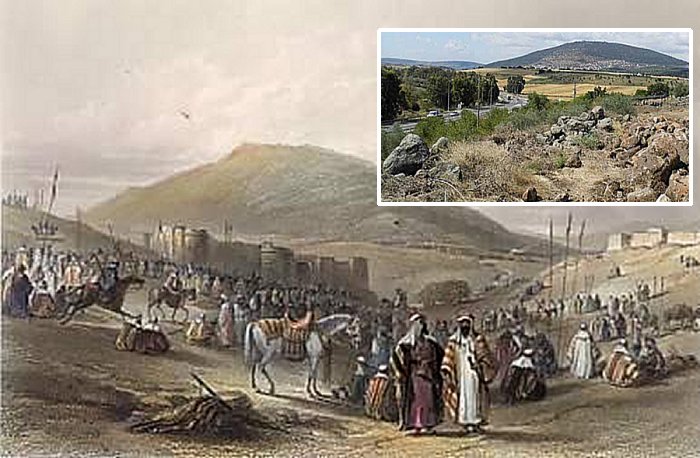Conny Waters - AncientPages.com - Archaeologists unearthed traces of a thriving ancient marketplace during an excavation led by the Israel Antiquities Authority in 2014.
The fair at Khan al-Tujjar. Image credit: - Antique Prints - Public Domain
In 1880, the traveler and researcher Charles Wilson painted a vivid picture of the bustling Khan al-Tujjar market. He described it as a cacophony of human voices and barking dogs, with trade activities spanning from dawn to dusk. The market was primarily driven by barter trade, attracting Jews, Arabs, and Christians from neighboring settlements and even those who traveled from afar.
All these people gathered at this vibrant marketplace to replenish their supplies at home, tents, and fields. The market was filled with a variety of colors, bustling sounds, and lively energy, and so the place captured the essence of the ‘Merchants' Caravanserai’ in 1880.
Indeed, a caravan stopping place had everything what was necessary for travelling merchants and other travellers. They could rest in special sun protection niches, and among others, they had a warehouse for storing goods, animal-occupied building with shallow niches for humans
Known since antiquity, the caravanserais were especially widespread from the IX to the XIV century.
Image credit: Israel Antiquities Authority
During their excavations beneath the fortress, built to the west of Khan al-Tujjar, archaeologists found a layer of dense soil, rich with artifacts from the Mamluk and Ottoman eras (15th–18th centuries).
These discoveries offer a remarkable insight into the bustling trade market that was active and very popular for several centuries in the region between the fortress and the khan.
“When we found the artifacts in the field, and turned to the historical sources, it aspired that the finds really corresponded with the sources. It was very exciting,” shares Edna Amos-Dalali, the excavation director on behalf of the Israel Antiquities Authority.
Their findings included bones of horses, dogs, camels, sheep and cattle, which is clearly supported by the traveller's description merchants and pesants arriving on camels and horses to buy or sale cattle or sheep. Additionally, the team unearthed a large number of ceramic smoking pipes.
Certainly, these smoking pipes once belonged to merchants who between business transactions, used to rest at the shop entrances, drinking coffee.
The excavation also uncovered a variety of pottery vessels, some made locally, and others imported from regions such as Syria, Turkey, Italy, and China, alongside finds such as rings and jewelry. These finds provide material evidence of the large market that operated at the site."
The archaeological dig revealed an assortment of pottery vessels, with some crafted locally and others imported from diverse regions such as Syria, Turkey, Italy, and China. Additional discoveries included rings and jewelry. These artifacts serve as tangible proof of the extensive and flourishing marketplace that functioned at this location.
See also: More Archaeology News
Khan al-Tujjar (also known as the Merchants' Caravanserai), was a popular gathering spot for traders journeying between Damascus and Cairo or between Transjordan and Acre.
During the Mamluk period (1353–1444), this location served as a khan owned by a prosperous merchant from Damascus. Given its commercial significance, it naturally evolved into a marketplace, known as Suq al-Khan (Inn Market.) The site was active from the Mamluk era up until the early 20th century.
Later, the site flourishing activities ceased, many believe it took place due to conflicts amongst local inhabitants.
Source - Israel Antiquities Authority
Written by Conny Waters - AncientPages.com Staff Writer
